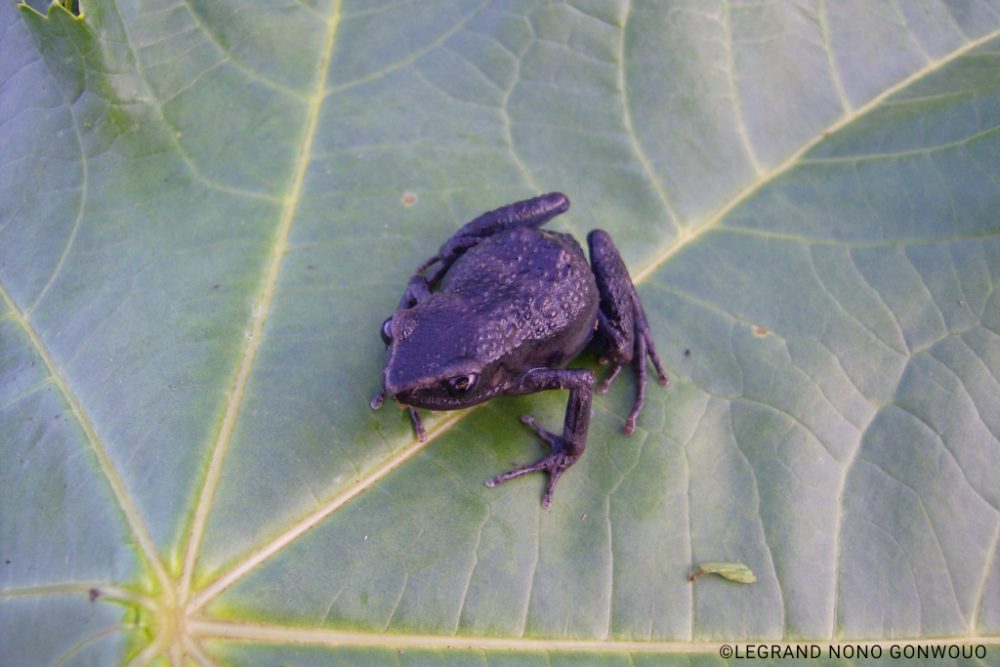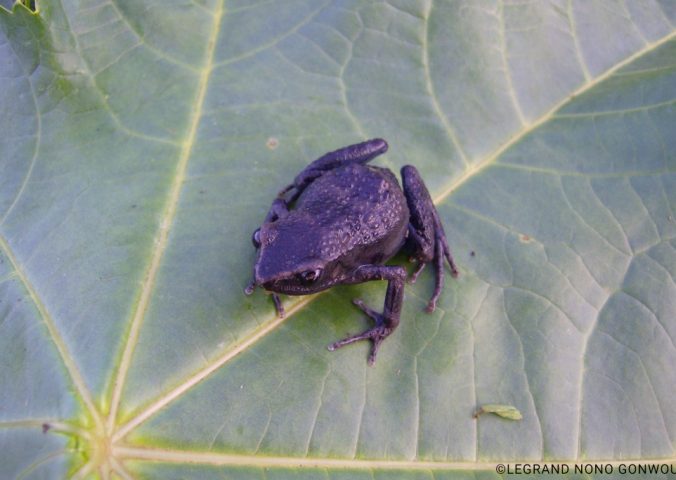About
The Nsoung long-fingered frog is a small grey, black and blue species that lives along high altitude mountain streams that run through shrub and montane forest vegetation.
This species is part of the Arthroleptidae family, also known as the squeaker frogs. The squeaker frogs are closely related to the “true frogs” in the family Ranidae, and diverged from all other frog families about 75 million years ago in the late Cretraceous period, with the long-fingered frogs diverging soon after. This was 10 million years before the extinction of the dinosaurs, making them as different from their closest relatives as camels are to whales! The last sighting of this species was in 2010 and it was last heard in August 2012. This species is under threat as a result of agricultural encroachment, including plantations of tree crops, expanding human settlements and the removal of wood by local people for firewood and building materials. Moreover, trampling by livestock is a threat as this degrades the habitat. The use of herbicides and pesticides is suspected to have long term effects on the stream habitat, affecting the larval stage. Deforestation occurs due to the unsustainable collection of bark from Prunus africanus, which is used for medicinal purposes. As a high- elevation species, its habitat may be strongly affected by climate change. This species does not occur in any protected areas and the protected area network in western Cameroon needs to urgently be expanded to include the remaining montane forest habitats, particularly on Mount Manengouba.
- Order: Anura
- Family: Arthroleptidae
- Population: Rare
- Trend: decreasing
- Size: 24.5-28.5mm
EDGE Score
Distribution
This species is only known from the southern slopes of Mount Manangouba at 1,750 – 2,000 metres above sea level in western Cameroon.
Habitat and Ecology
This species lives in and around small streams running through dense secondary bush and montane forests. Males have been found vocally active along the side of streams where they hide in small cavities. This species presumably breeds in streams, laying eggs which hatch into tadpoles. Most calls can be heard during the dry season.

